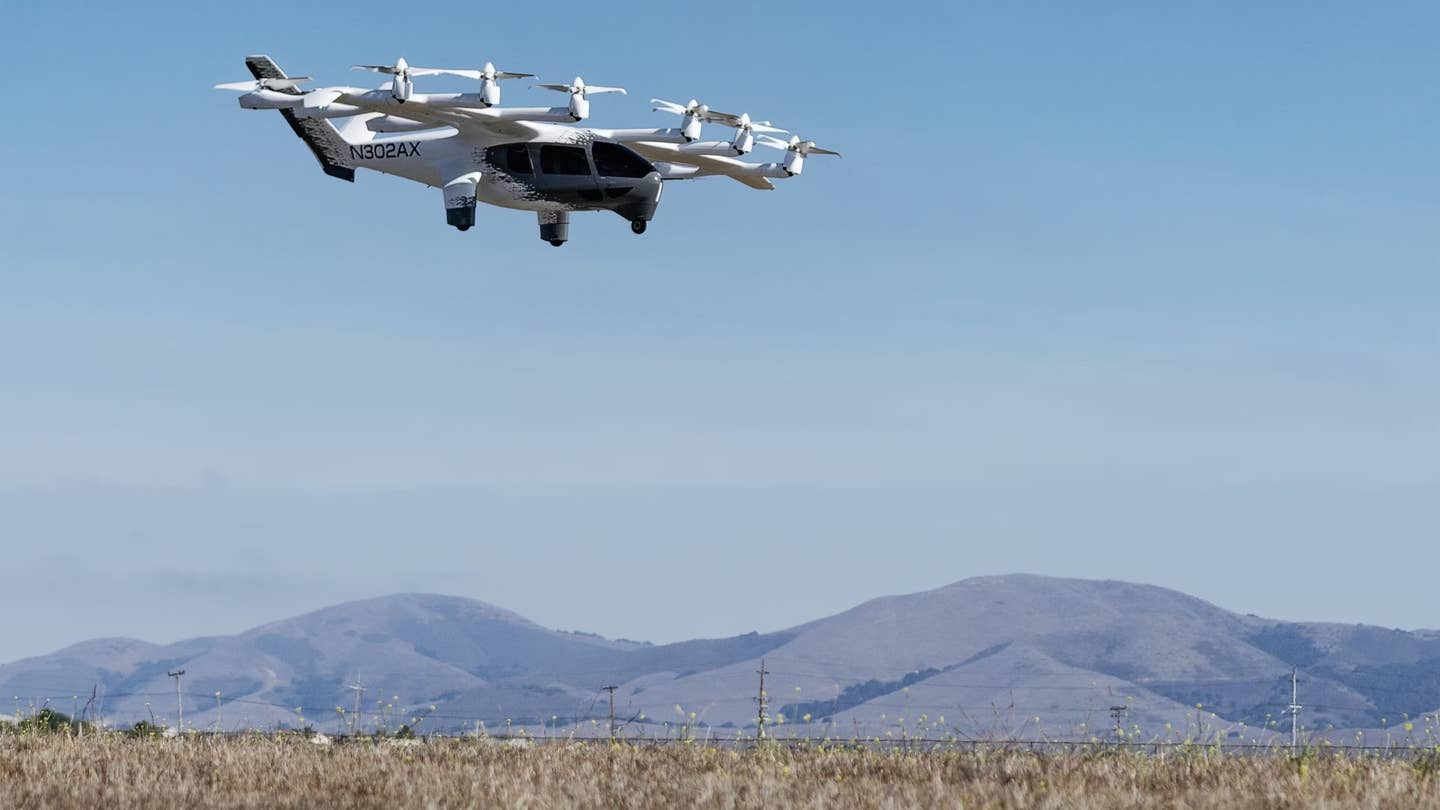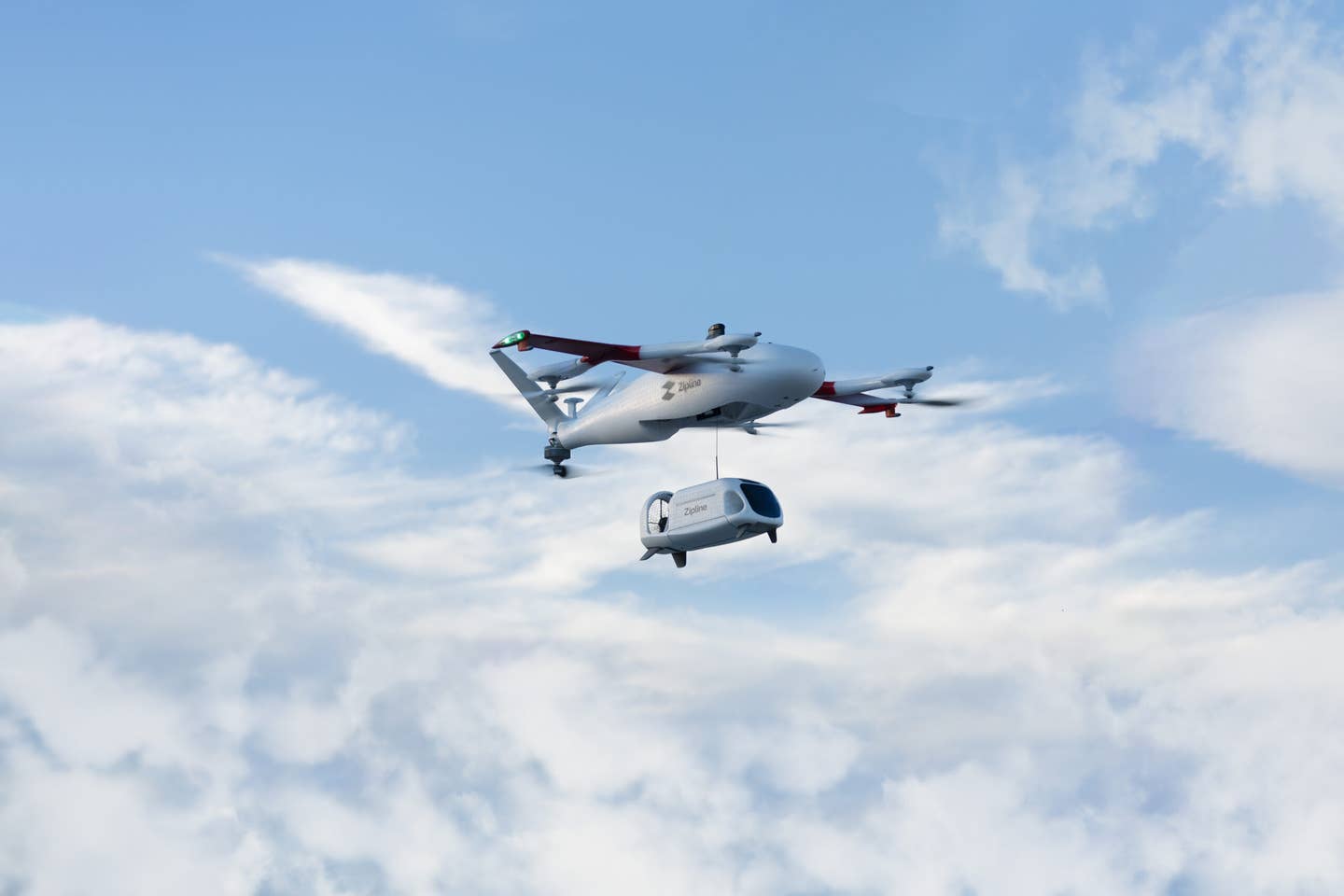Moving World Report 2024: Breaking Down Challenges, Opportunities in Aviation
lectric airplanes, air taxis, flying cars, drones, and other aircraft are being developed to address issues such as carbon emissions and the pilot shortage.

Electric vertical takeoff and landing (eVTOL) designs, such as Archer Aviation’s Midnight, and other new aircraft could address aviation challenges such as sustainability or the pilot shortage.
Aviation has its fair share of problems. The current pilot shortage of about 17,000 is only expected to grow by the end of the decade, and industry sustainability commitments may not achieve the target of net-zero aviation emissions by 2030, to name a few. But these issues, dire as they may be, present opportunities for innovation.
Venture capital firm UP.Partners last week published the 2024 edition of its annual Moving World Report, a deep dive into the movers and shakers in aviation and transportation more broadly. Though the industry’s challenges are steep, the company believes the introduction of new aircraft types—such as electric vertical takeoff and landing (eVTOL), hydrogen-powered, and blended wing body designs—offers hope that they can be solved.
“Our goal with this report is to equip industry leaders, entrepreneurs, and policymakers with a comprehensive understanding of these changes, enabling them to effectively navigate and shape the future of mobility,” said Cyrus Sigari, co-founder and managing partner of UP.Partners.
UP.Partners, which holds stakes in a range of mobility-focused startups, estimated that the pilot shortage will grow to 65,000 by 2030. At the same time, transportation is the biggest culprit of U.S. carbon emissions, with aviation contributing an estimated 8 percent within the segment. Based on announced pledges, UP.Partners claims aviation emissions are expected to rise 79 percent between 2020 and 2030—theoretically, that figure would need to be capped at 22 percent to remain in line with global net-zero by 2050 targets.
These issues will need to be addressed quickly. And an influx of new intercity and long-distance air mobility options may be the catalyst.
The Innovation Problem
According to UP.Partners, there’s an “innovation problem” in commercial aviation.
As Stripe CEO Patrick Collison pointed out, the inception of the Boeing 737 design is now closer in time to the Wright Flyer than it is to the present day. At the same time, efficiency gains in carbon-emissions reduction have leveled off over the past 70 years.
According to the report, those gains are due almost entirely to engine development rather than airframe innovation. However, commercial airlines are exploring blended wing body designs—which UP.Partners called the first major airframe innovation during that span—and other sustainable configurations. The U.S. Air Force in August awarded startup JetZero a $250 million contract to develop a blended wing body demonstrator, and Airbus previously announced a similar concept.
Emissions reductions may improve further with the introduction of electric and hydrogen aircraft. The report predicts electric models will hit the market in 2025, followed by hydrogen fuel cell designs in 2030 and hydrogen combustion aircraft in 2040.
However, that comes with the caveat that electrifying or switching to hydrogen “likely has a limited impact, at a huge cost.”
UP.Partners estimated that electrifying all flights less than two hours could reduce emissions by 28 percent, a respectable figure. But electrifying or using hydrogen for longer flights—which account for the remaining 72 percent of emissions—is not technically or financially feasible with current technology.
Sustainable aviation fuel (SAF) is expected to bridge the gap, contributing to 65 percent of emissions reductions by 2050 according to International Air Transport Association (IATA) projections. However, the report estimates that SAF is still 43 percent more expensive than conventional jet fuel. Bringing those costs in line could take more than a decade, it predicted.
UP.Partners also raised concerns that certain SAF commitments may be examples of “greenwashing.” RyanAir, for example, has pledged to obtain about 10 percent of its fuel from SAF by 2030. But the airline does not know exactly where it will come from.
“There isn’t enough cooking oil in the world to power one day of green aviation,” Ryanair CEO Michael O’Leary said in December.
Electric Aircraft Have Arrived
Producing SAF and other sustainable fuels presents a massive challenge for aviation. But there are plenty of aircraft in development that will use them when the time comes.
In fact, many are already flying. The term drone may conjure up images of buzzing, microwave-sized aircraft. However, many designs resemble small cargo planes, with similar ranges and payloads.
In 2023, electric drones completed 1 million deliveries. Commercial drone flights, meanwhile, have increased by 135 percent per year since 2018. Today, the aircraft mainly deliver air freight, parcels, and medical cargo. But the report predicts the pilot shortage will only accelerate the technology further, opening up even more use cases.
Adding to the momentum for drone delivery is its declining cost. According to UP.Partners research, the price is about $4 per delivery when a remote pilot is able to monitor multiple drones. That’s nearly one-third the price of a comparable automobile delivery, the firm said.
Per the report, Walmart is the world’s leading developer of drone delivery services outside of the war in Ukraine. In the past two years alone, the retailer completed more than 2,000 U.S. deliveries out of 36 hubs across seven states. In the Dallas-Fort Worth area, 1.8 million households are now eligible for drone delivery through Walmart and its partners.
Amazon Prime Air, meanwhile, has faltered. It has now been more than a decade since former CEO Jeff Bezos promised to permeate U.S. skies with drones, but the e-commerce giant has made only a handful of deliveries.
Compared to Walmart, Amazon has a few strategic disadvantages, UP.Partners said. For example, as Walmart partners with leading drone manufacturers and providers such as Zipline, Wing, Flytrex, and DroneUp, Amazon has taken a vertically integrated approach.
And while Walmart has more than 4,600 stores located within 90 percent of the U.S. population, Amazon has around 100 active fulfillment centers. However, Prime Air recently announced an international expansion and a ramp-up of its service in Texas.
As drones take to the skies, eVTOL aircraft may be the next to emerge. According to the report, there is an 18,000-unit global backlog for eVTOL aircraft valued at $111 billion. United Airlines leads the way, with large commitments for air taxis from Archer Aviation and Embraer’s Eve Air Mobility.
EHang, a Chinese manufacturer, completed the world's first commercial passenger-carrying eVTOL air taxi flight in December, more than a year before the first American firm expects to enter service. But the industry is crowded. Several manufacturers are neck-and-neck on SMG Consulting’s Advanced Air Mobility (AAM) Reality Index, a monthly report that measures a company’s ability to type certify and mass produce AAM aircraft. The top dogs include EHang, Archer, Eve, Joby Aviation, Beta Technologies, and Boeing’s Wisk Aero.
Meanwhile, personal, single-seat eVTOL designs, such as the Pivotal Helix, and “flying cars” capable of driving on the freeway and taking off from the runway, such as the Jetson One, have already entered service.
Automated flight systems, such as those from Xwing, Reliable Robotics, and Merlin Labs, are also approaching certification. And soon, the industry may even introduce humanoid co-pilots.
The arrow is certainly pointing up for drones, eVTOL, and other emerging designs as they attract investments from private firms. But according to the report, the U.S. Department of Defense is the single largest customer of mobility technology.
Through innovation arm AFWERX, the Air Force is working with a plethora of manufacturers to develop the next generation of aviation technology. Contracted firms include Archer, Beta, Pipistrel, Xwing, and Reliable.
During periods of conflict—a fair characterization of today’s state of play—U.S. military spending and venture capital investment in defense go up, according to data from PitchBook and the Office of Management and Budget. So, it’s possible that wars in Europe and the Middle East will accelerate these projects even further.
Battle for the Final Frontier
Private industry, government, and other stakeholders are coming together to address the issues facing the planet’s skies. But some are looking higher.
2023 was a banner year for commercial space activity. About 13,000 satellites are now in orbit, a number UP.Partners expects to rise to 50,000 in 2030. Satellite constellations, led by SpaceX’s Starlink, have increased tenfold over the past four years. And dollars spent on global space activity have tripled over the past decade, buoyed by growth in commercial ventures.
Orbital launch attempts, meanwhile, have spiked following Russia’s February 2022 invasion of Ukraine, with the U.S. and China leading the way. At the same time, the cost to send a satellite to low-Earth orbit (LEO) has declined significantly.
For example, SpaceX claims Starhip—the largest and most powerful rocket ever built—will deliver payloads for about $45 per pound. The spacecraft has attempted two suborbital test flights, both of which resulted in the loss of its rocket and booster and spurred FAA mishap investigations.
Still, SpaceX far surpasses all other launch providers in terms of payload, the report said. If successful, its Starship human landing system (HLS)—which NASA will use to return humans to the moon through the Artemis program—would drastically reduce the cost of lunar payload delivery compared to the Apollo program, from $36 billion to $70 million per ton.
However, UP.Partners worries that the U.S. may fail to lead in the final frontier. Venture capital investment in space startups has risen almost 3,500 percent over the past decade. But most space special purpose acquisition companies (SPACs) have fared poorly. For almost all of them, stock price as a percentage of valuation has declined more than 50 percent.
The report also raised concerns around the Artemis program. NASA in December delayed the Artemis III moon mission from 2025 to 2026, in part due to the issues facing Starship. SpaceX CEO Elon Musk estimated each lunar landing will require eight Starship launches to perform cryogenic refilling in orbit. But the Government Accountability Office predicts it will be double.
Any delay to Artemis or other U.S. space initiatives could open the door for China. The Eastern superpower is quickly accelerating its commercial space program, with companies such as Space Pioneer and Deep Blue already landing reusable rockets. Blue Origin and Stoke Space are among the U.S. firms developing similar spacecraft.
A Moving World
The issues facing aviation are not insignificant, nor are they easy—or cheap—to solve. The industry will soon need to complement or supplement thousands of pilots, eliminate significant quantities of carbon, and maintain aircraft performance and efficiency while doing it.
The good news is that pressure makes diamonds. While it may not be enough just yet, hundreds of startups are pouring billions of dollars into new airframes, fuels, and other technologies.
However, regulation will need to catch up with innovation. The FAA has finalized some early drone regulations, for example, but still needs to address flight beyond the pilot’s visual line of sight (BVLOS). AAM regulations, meanwhile, are still in a primitive state—only initial guidelines have been released.
For the U.S.—or any nation—to lead aviation into a greener, more efficient future, regulators will have just as large a role to play as the manufacturers themselves.
Like this story? We think you'll also like the Future of FLYING newsletter sent every Thursday afternoon. Sign up now.

Sign-up for newsletters & special offers!
Get the latest FLYING stories & special offers delivered directly to your inbox






